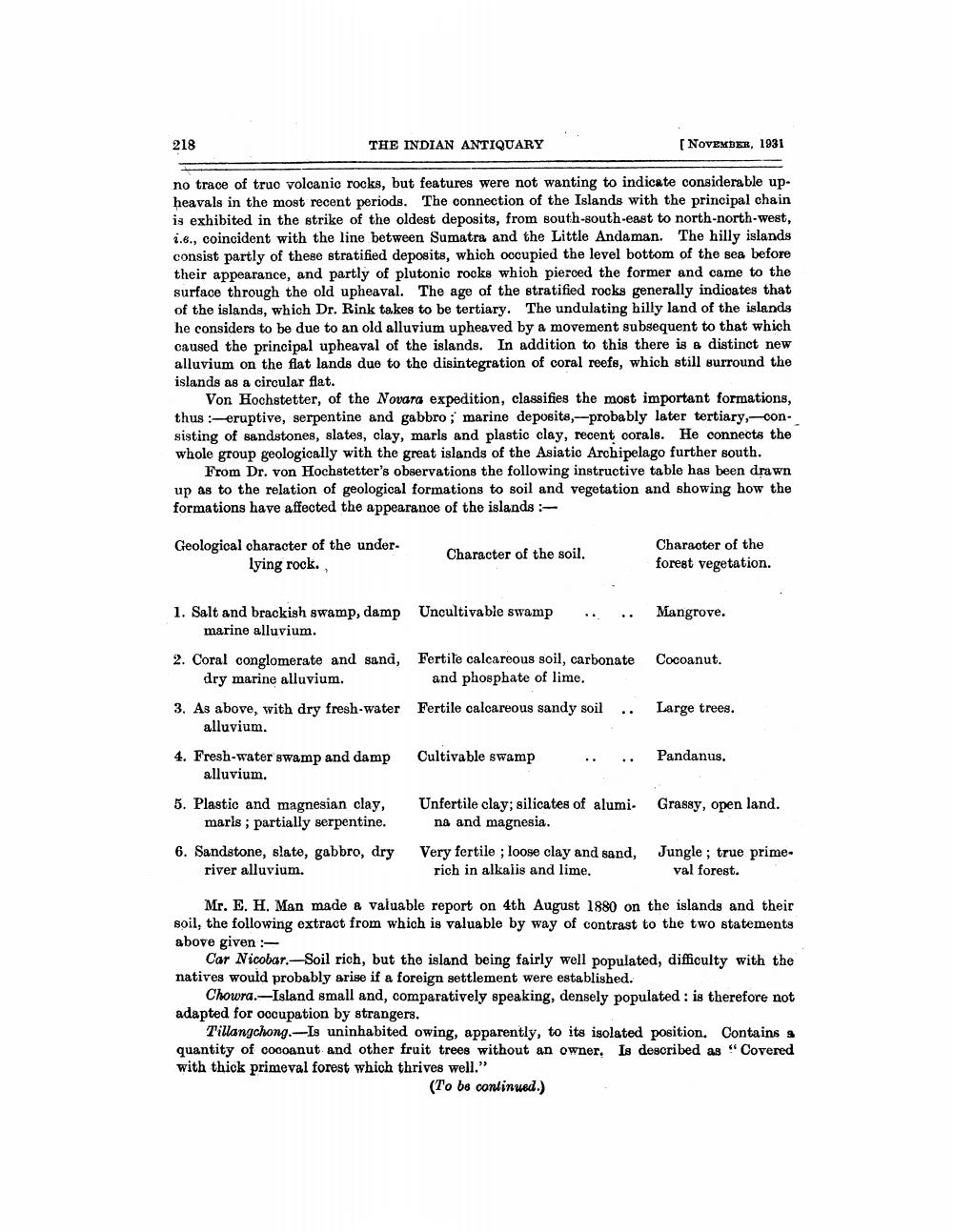________________
218
THE INDIAN ANTIQUARY
[NOVEMBER, 1931
no trace of truo volcanic rocks, but features were not wanting to indicate considerable upheavals in the most recent periods. The connection of the Islands with the principal chain is exhibited in the strike of the oldest deposits, from south-south-east to north-north-west, 1.6., coincident with the line between Sumatra and the Little Andaman. The hilly islands consist partly of these stratified deposits, which occupied the level bottom of the sea before their appearance, and partly of plutonic rocks which pierced the former and came to the surface through the old upheaval. The age of the stratified rocks generally indioates that of the islands, which Dr. Rink takes to be tertiary. The undulating hilly land of the islands he considers to be due to an old alluvium upheaved by a movement subsequent to that which caused the principal upheaval of the islands. In addition to this there is a distinct new alluvium on the flat lands due to the disintegration of coral reefs, which still surround the islands as a circular flat.
Von Hochstetter, of the Novara expedition, classifies the most important formations, thus eruptive, serpentine and gabbro; marine deposits,-probably later tertiary-consisting of sandstones, slates, clay, marls and plastic clay, recent corals. He connects the whole group geologically with the great islands of the Asiatic Archipelago further south.
From Dr. von Hochstetter's observations the following instructive table has been drawn up as to the relation of geological formations to soil and vegetation and showing how the formations have affected the appearanoe of the islands -
Geological character of the under
lying rock.
Character of the soil.
Character of the forest vegetation.
Mangrove.
Cocoanut.
1. Salt and brackish swamp, damp Uncultivable swamp .. ..
marine alluvium. 2. Coral conglomerate and sand, Fertile calcareous soil, carbonate dry marine alluvium.
and phosphate of lime. 3. As above, with dry fresh-water Fertile calcareous sandy soil ..
alluvium.
Large trees.
4. Fresh-water swamp and damp
alluvium.
Cultivable swamp
.
.
Pandanus.
Grassy, open land.
5. Plastic and magnesian clay,
marls ; partially serpentine. 6. Sandstone, slate, gabbro, dry
river alluvium.
Unfertile clay; silicates of alumi.
na and magnesia. Very fertile ; loose clay and sand,
rich in alkalis and lime.
Jungle ; true prime.
val forest.
Mr. E. H. Man made a valuable report on 4th August 1880 on the islands and their soil, the following extract from which is valuable by way of contrast to the two statements above given
Car Nicobar.--Soil rich, but the island being fairly well populated, difficulty with the natives would probably arise if a foreign settlement were established.
Chowra.--Island small and, comparatively speaking, densely populated : is therefore not adapted for occupation by strangers.
Tillangchong.-Is uninhabited owing, apparently, to its isolated position. Contains a quantity of cocoanut and other fruit trees without an owner. Is described as "Covered with thick primeval forest which thrives well."
(To be continued.)




